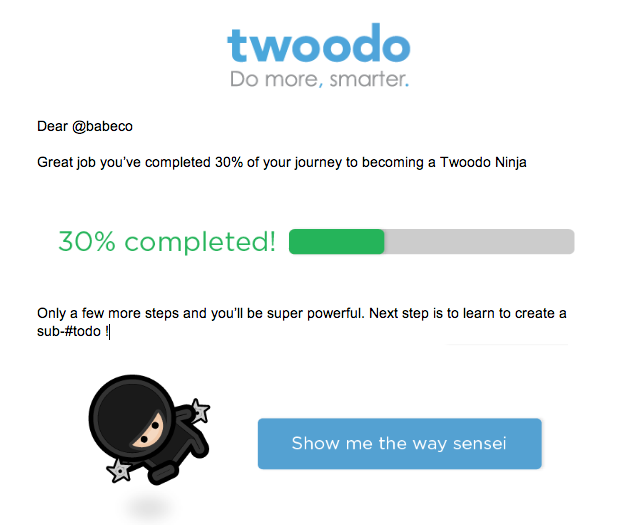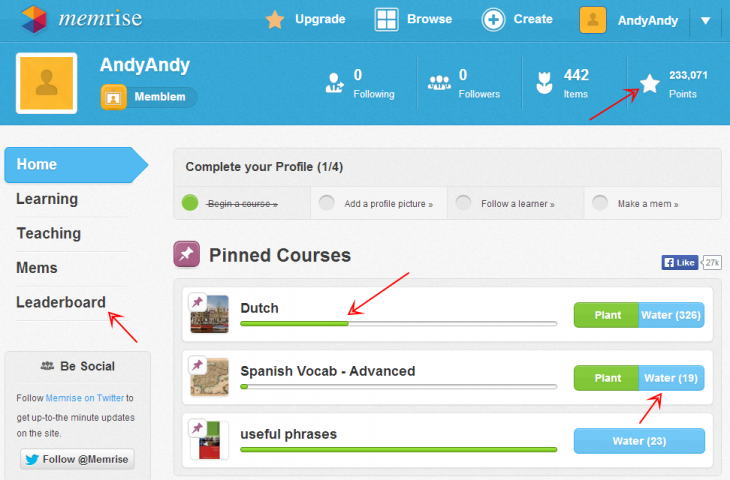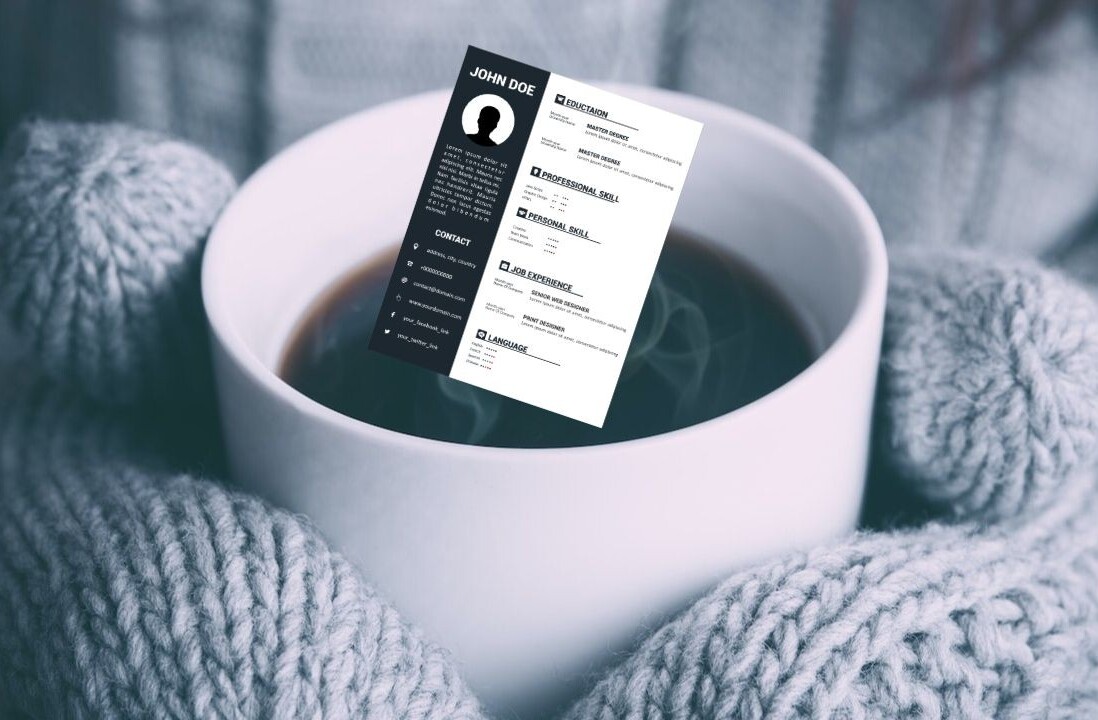
Denis Duvauchelle is CEO and co-founder of Twoodo, helping your team organize itself using simple #hashtags.
People today are bombarded with information, ads, offers, messages, videos, articles, tools, websites. It’s extremely difficult to get their attention. Even worse, once you have their attention it’s often more difficult to retain it.
This holds true both for consumers and employees across almost all fields and industries. The phenomenon has been dubbed the “user engagement crisis” and this article is about how gamification can help you overcome this scarcity of attention and engage your visitors effectively.
What is gamification?
In its simplest sense, gamification is showing users how to do something and rewarding them for doing it right or figuring out the problem.
Rewards in gamification normally tap into our psychological need to feel successful and accomplished. Typically, you get a “well done” message, some hyped-up music and some kind of virtual token of achievement (like a medal, a bag of gold, a picture of kittens, approval from a mentor or saving someone in distress).
Gamification has been extremely successful in online learning, such as languages. Here you can see how Memrise is using leaderboards, a points system, a completion bar and other features to get users to attain their goal of learning a language whilst making it fun and competitive.
But this is a very advanced example – their entire service is based on gamification.
The gamification process must show users in a logical and bite-sized way how to learn to use your product correctly. This is usually done by beginning with the simplest action and layering on the complexity.
Or, by having a knowledge of user mouse-tracking, a plan can be set out to explain the steps that users naturally seem to go by.
ActiveInbox, an email management extension, has applied gamification to its onboarding. As you begin to perform actions in your inbox, a popup explanation and arrow helps you to learn how to use it as you go.
You can also choose to pause the gamified walkthrough and complete it later, if now is not a good time. This option is important: should you force users through it, or allow it to be paused (but set up reminders to complete it) or allow them to opt out completely?
A UserVoice blog post reminds us of the purpose of gamification: “gamification is not about making something boring interesting, or motivation – it’s about reminding people why they were inspired to be there and use that product.”
After all, you are not making an actual game!
We became interested in gamification after finding out that our onboarding videos explaining our team collaboration tool were only being watched by 20 percent of our registered users. Also, we had been having trouble getting people to learn how to use it by themselves. If they weren’t willing to read the how-to guide or watch the video, gamification seemed like the next logical step to take.
We have decided to apply it to our user onboarding and also in our weekly digest emails. Here’s a sneak preview (it’s not live yet!):

Next: Hook ’em in during the onboard!
Why is onboarding the crucial step?
Google Drive has over 120 million users. Less than 15 percent of that number have watched the tutorial on YouTube since 2012.
They won’t read your FAQs; they won’t watch your painstakingly-made video. If you have recognized that the reason people aren’t returning to your website is because they found it too difficult to navigate (and yet won’t learn how to use it) they need to be incentivized to take the next step.
Yes, it’s ironic. If you can’t make the learning any more intuitive and effortless, gamification may be the best option. Any confusion or blockers from learning how to use your product will immediately lower how many users return for a second visit.
The First User Experience (FUE) needs to be so clear that the person can leave and perfectly explain what they just did to a friend. They will be able to see and extol the value of it. You’ll have maybe thirty seconds to keep them there, if you’re lucky.
When they start the onboarding process, it needs to avoid overwhelming the user but get them to their goal – learning the basics. Think about level one of Super Mario Brothers compared to the final boss – the gaming industry got this covered years ago!
What is the psychology behind gamification?
This is where we dive into our primitive monkey-brain drivers:
- Hunting
- Gathering
- Socializing
- Finding patterns
This is linked to Maslow’s hierarchy of needs:
- physical needs
- security needs
- love and belonging
- esteem
- self-actualization
An understanding of human psychology is extremely useful in UX. One of the core things you are trying to achieve with your product is to make people feel that they cannot live without it.
Growth hacker guru Sean Ellis states that you need at least 40 percent of users to feel “very disappointed” without your product. However, as we stated before, the frustration we had was to get people to go through the onboarding process and really learn how to use our tool. Those who did not complete the onboarding did not get the most out of the tool and did not discover the full added value.
Gamification can be both competitive and collaborative – achieve the goal before someone else does, or achieve together in a team. Different companies go for different styles.
Salespeople, for instance, may suit the competitive version better since they are numbers-driven. Customer service people may suit the collaborative solution form better.
There is the social status perspective as well – showing off or celebrating achievements. From all the data derived from your users (as much qualitative as possible, or the numbers are meaningless) you can make more informed decisions on what gamification features would boost your product or turn people off it.
Next: What kind of gamification works for my company?
What kind of gamification could I apply?
Good gamification design seeks to understand and align an organization’s objectives with a player’s intrinsic motivation. Then, through the use of extrinsic rewards and intrinsically satisfying design, move the player through their journey of mastery.
This journey requires elements such as desire, incentive, challenge, reward and feedback to create engagement. – Gabe Zichermann
The gamification you choose and the tone it is delivered in must represent your brand. A strict diet website would be expected to incentivize by giving hardcore messaging styles:
WHAT DO YOU THINK YOU ARE DOING – GET BACK ON THE TRAIN!!!
Is your style aggressive, challenging? Or is it encouraging, motivating, piquing curiosity? Make it right for what your company is about.
With your gamification technique, people should feel like:
- they accomplished something special
- they accomplished something difficult
- they did better than someone else
- they beat their own previous accomplishments
- they learned something useful
- they learned something really awesome
- they got to do something they love
Bottom line: they need to walk away feeling positive about the experience and hungry to go back.
Here are some ideas for applying gamification to your onboarding:
- award/badge on your profile for completing an action (like reading a FAQ, creating a profile) – example: LinkedIn
- a congratulations-style message each time they complete a core action (beginning to use your product frequently)
- a timer for learning how to do something (compete against the clock or get an egg on your screen)
- extra benefits for completing the whole walkthrough (GBs more space; extra free month of usage; extra space for people in your network) – example: Dropbox
- more customization options if they “unlock” stuff by completing onboarding lessons (eg. not the auto-generated picture, coloring theme of the website, ability to invite users so you can help others)
- points system against teammates or a general network (power user/super user leaderboard) – example: StackOverflow
- emails updating them of progress with data visualization (graphs, charts)

Beyond onboarding: resources for gamification
With gamification gaining momentum over the past few years, naturally some services have appeared to make that whole process easier. If you feel you need experts on the case, check out these companies:
Remember, don’t think that gamification is going to solve everything. It took Rovio 51 attempts before they got it right with Angry Birds. And they were an actual gaming company.
Don’t miss: 9 lessons learned from redesigning an e-commerce app for growth
Get the TNW newsletter
Get the most important tech news in your inbox each week.








